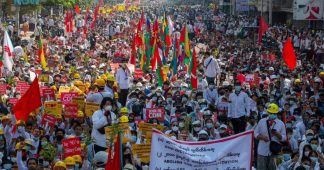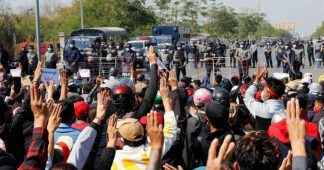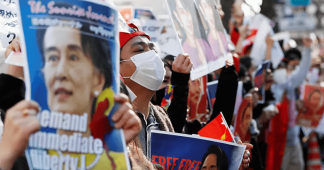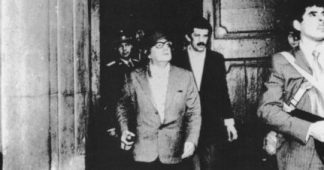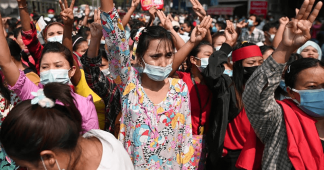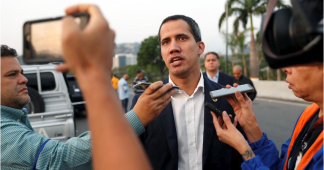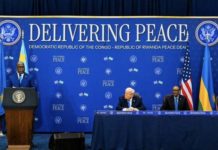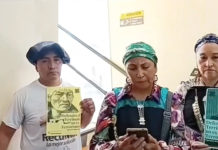Combating the military businesses, military bureaucracy, and the old military structure and replacing it with the democratic organs of the people’s democracy
by Mar 12, 2021
The shell of the old Burmese society is cracking under the nationwide street protests against the military dictatorship, sparked by the small group of Mandalay protesters on February 6, 2021. The decades-old military bureaucracy has been paralyzed since February 2, when health care workers began the civil disobedience campaign. Later, civil servants from other state departments joined them.
The financial sectors also went into collapse when staff of private and state-owned banks took part in the campaign, people withdrew their savings, and now many are campaigning to not pay any tax money to the military government. The military dictatorship is already moribund and can count only on the police forces, soldiers, and top-level bureaucrats in the civil administration.
The phenomenon of people struggling against military dictatorship is not new for the Burmese people. As the famous journalist and politician Hantharwaddy U Win Tin (1930–2014) put it, the revolution in Burma shall happen once every decade as long as the military dictatorship prevails. The present nationwide struggles have been proving his words true, and reflect the conflicts rooted in Burma’s military-bureaucratic capitalism.
Military Bureaucratic Capitalism
From the coup rehearsal of 1958 that saw the arrest of four hundred “Communist sympathizers” by the military, the command began to found military-owned businesses. After the 1962 coup, all industries in Burma were nationalized in the name of the “Burmese Way to Socialism.” The military bureaucratic caste then emerged in the civil administration and economic planning. It is no wonder such a “socialism” of the top military command, one that blocked democratic inputs from below, could not work. Numerous labor and student strikes happened sporadically and were suppressed brutally, the economy was bankrupt, and the country stagnated and finally became one of the least developed countries.
Against this backdrop, student protests in 1988 led to a nationwide uprising. People from all corners of the country took part in the uprising. The tentative leaders of the mass movement and intellectuals adopted the banner of calling for a multiparty democratic system, but sought an immediate symbolic leader.
The reductionist and individualist interpretation of official history—with the axiom, “The Heroes Make the World”—gave Aung San, as a national symbol, the credit for the people’s fight against the Japanese fascists and the consequent successful fight for independence from British colonialism under the leadership of the Anti-Fascist Organization. (The Anti-Fascist Organization was founded in 1944 by the leaders of the Communist Party of Burma, the Burma National Army led by General Aung San, and the People’s Revolutionary Party, later renamed the Burma Socialist Party.) General opinion came to accept Aung San Su Kyi (ASSK), Aung San’s daughter who had returned from England to take care of her sick mother, as a national leader and liberator. The bourgeois press and governments in Western countries, eager to push the race toward globalized capitalism, praised her as a democratic icon.
From the beginning, ASSK was never a revolutionary. She dared not challenge state rule outright and, accepting its legitimacy, asked for concessions from the military-appointed puppet, the interim government of the famous Barrister Dr. Maung Maung. This at a time when the old bureaucratic rule and civil administration had already been paralyzed and replaced by the democratic organs of the township general strike committees. As a result, the precious revolutionary tempo of the people was disrupted and, under opportunistic and reconciliatory leadership and the military’s ongoing and unrelenting brutal crackdown, the exhilarating force of the masses’ intervention in Burmese history dissipated.
The military coup then happened again and the top military leaders tried to transform their rule, in accord with the times, into the accepted capitalist form. State-owned enterprises and export-import permits were sold at cheap prices to their close associates and the Burmese economy became dominated by military conglomerates owned by top officers and their lackey cronies. Politically, the times suggested the form of “democracy” pursuant to a constitution that was one centered on the military’s disciplinary guidance. In 2008, the military-drafted constitution was ratified in a so-called popular referendum.
In 2010, the founding of political parties was permitted and elections were held. The National League for Democracy (NLD), founded by the people who had selected ASSK (now released from confinement) as leader, boycotted the election, as did the great majority, and the Union Solidarity and Development Party (USDP) composed of ex-military personnel won. Starting in 2012, the NLD, led by ASSK, ran in elections; it won a landslide victory in the 2015 general election. Political analysts and thinktanks funded by Western donors, as well as the so-called international community dominated by representatives of global capitalists, now praised Burma for its “democratic transition.”
In reality, the economic and political base of Burmese society has never been challenged and was left untouched by ASSK. While the military-bureaucratic rule gave people a degree of freedom of criticism, it still retained a larger degree of freedom of violence and power, continuously expanding its wealth by plugging into global capitalism, exploiting workers, and taking peasants’ land by force. It is no wonder that in short order ASSK and her party became the political representatives of military-bureaucratic capitalism. The weight of that class’s economic and political power was far too heavy.
ASSK asked people not to call the owners of the great military conglomerates harsh names, but to instead refer to them as “tycoons,” simultaneously exposing her own attitude and the public hatred toward wealth accumulation within the framework of the military-dominated economy. Finally, she appeared before the International Court of Justice in defense of the military leaders accused of genocide against the Rohingya people. In January 2020, the Hague court ordered Burma to take “all measures within its power” to prevent genocide.
In the eyes of the military-bureaucratic capitalist class, political representatives are no more than their employees. They can be employed or fired at will, since the actual base is not the power of people’s votes. Commander-in-chief Min Aung Hlaing, who has his own economic empire and is under the charges of the International Court of Justice, is approaching mandatory retirement age. He faced substantial danger of selection as the sacrificial lamb by, in his view, his own employees for a ritual at the Hague Court. To show who the real boss is, he ordered the military coup on February 1, 2021. As leader of the military bureaucratic capitalist class, he ordered his employees, NLD leaders including ASSK, to be arrested.
Middle Class: Civil Disobedience Campaigns and the Red Ribbon Campaign
The day after the military coup, health care workers—particularly doctors—initiated civil disobedience campaigns, calling for the release of the elected leaders, including ASSK, its government officials and representatives, and the restoration of the NLD government that won in another landslide victory in the 2020 general election, within the political framework of the military-drafted 2008 constitution. Later, other civil servants from several state departments started the Red Ribbon Campaign (RRC) and later joined the civil disobedience campaign under the same slogans.
These slogans might be strange to those in other countries, since workers and peasants suffered under the NLD government in ways not significantly different from outright military rule. It is no surprise. Following the little bit of political and economic liberalization for international markets and donors, some jobs were created in the private economic sectors, including NGOs, off which the middle class—defined by income, living standards, occupation, and education—almost entirely benefitted.
The NLD government put a relatively significant emphasis on the health sector, especially given the global pandemic. Civil servants have a long history of hatred toward filling administrative positions with military personnel. As long as elections and civilian rule are maintained under the military constitution, the middle class appears satisfied with the gradual and minimal changes the ASSK-led NLD government kept trying to push. They seem to have believed that the clauses in the constitution that give power to the military could be changed bit by bit.
At the beginning, the middle class’s tactical move was non-cooperation with the military government; they refused to go to work. As one would expect, the middle class dared not take the risk of protesting publicly in the streets. Expecting international pressure and intervention, they urged patience before taking any action on the ground. Some even claimed that the military just temporarily took state power to investigate voting fraud and would then return state power to the NLD government; the real coup would take place if people took to the streets, since the army would then claim the country is in anarchy and would do whatever necessary to restore law and order.
But no influential person or group could control the momentum of the underlying class struggle in a conflict-ridden, decaying society. The military coup showed the crack in the cosmetic face of the old society with the arrest of ASSK and elected government officials, removing their own mask. The unmasked, much-hated old face of military bureaucratic capitalism showed through, and the working class and progressive youth stepped forward to attack and shatter the shell of the old society.
Working-Class and Progressive Students
The working class in Burma has never hesitated when class struggle erupts and has always led the resistance against the military dictatorship. This has been true in every mass movement in Burma. After the small brave student protest in Mandalay on February 5, thousands of workers from Hlaing Thar Yar in Yangon marched in the center of Yangon City. On February 6 they joined progressive youth from the Student Union. The next day, workers from South Dagon joined the street protests, and some politicians and activists became involved as well.
After their outright challenge against the military coup, the protests spread all across the country. including to ethnic minorities in more remote areas, with more people participating day by day. Even ethnic minorities, who endured the sufferings and casualties of war and the dehumanization and genocidal attempts during NLD rule, came out for the release of the NLD leaders and the restoration of the elected government. Workers and peasants who faced suppression and imprisonment during NLD rule also joined the movement and chanted many of the same slogans.
Anonymous Revolutionaries and Impostors
Without the facts from the real movement on the ground, it is impossible to understand who is leading the mass movement and why people appear to yearn for the NLD leaders who helped buttress the military ruling class. The domestic media and exile broadcasting outlets cannot explain these inner facts. For reasons of security, I can only go into these questions in general terms.
The progressive youth forces and the real bases in the Hlaing Thar Yar and South Dagon townships have been led by our comrades who have engaged together for many years in organizing and struggle. These forces have years of experience of economic struggle in their industries, of class solidarity, and of forming democratic trade unions in their own factories. Other forces at play in the mass protests have followed them spontaneously, out of their consensual hatred against the military dictatorship.
While our comrades have to play low-profile roles due to security reasons, the opportunist former political activist and one of the leaders from the 1988 generation, Ko Min Ko Naing, has been giving empty interviews to the media by leveraging his old political clout. In reality, he has no real popular base and no leading role in the daily mass movement. However, many Burmese people in the countryside who rely on the radio for political news only know of Ko Min Ko Naing after ASSK. Thus, his political line of releasing the NLD leaders and the restoration of the NLD government under the 2008 constitution became the widespread slogans of the people.
Lacking any real popular base, opportunist youth forces from one political party that participated in the 2020 general election, within the political framework of the military-drafted constitution, jumped into the public march in front of our comrades who initiated the protests, and pretended to be the real leaders of the masses in the domestic media and exile broadcasting outlets.
In line with the age-old historical practice of looking for individual heroes, some exile Burmese politicians tried to find a focal or influential leader to direct and coordinate the nationwide masses, and then portrayed them as the true leaders of the new generation. The workers felt disgraced at their dishonesty and pretension. Yet, in their numbers and media skills, these impostors, combined with the spontaneous movement of the masses around the country, make their slogans overshadow the revolutionary slogans of our solid working-class movement.
But a political analyst would be rash in concluding that the Burmese people still admire or believe in ASSK. People want to fight against the military dictatorship first and do not like to argue about controversial matters that would disintegrate the solidarity of the people before the complete overthrow of the military dictatorship. We even have the saying, “All victories could be achieved with solidarity and unity.” This seems to place the problems and questions of who bankrolled the NLD among those that should be settled later among the people, independent of military rule.
Many people would like to combine forces under the illusory image of their liberator, now the prisoner, ASSK. Ironically, the liberators become the prisoners and the prisoners become the liberators. As the progressive youth in Burma sings, “No Supreme Savior”—our comrades still keep marching together, as part of the working class and progressive forces, confident that the coming struggles will show that we had a genuine analysis of reality.
The House of Representatives
On the day of the military coup, the soldiers arrested the NLD government officials and some representatives. On February 5, the remaining NLD representatives living in the state-owned compound, Naypyidaw, formed a committee for the representatives of the Pyithu Hluttaw (“CRPH”)—the House of Representatives, the lower house of the Burmese legislature.
Their statement claims that: they are the legitimate representatives to call for parliament and the establishment of a new government; the present government is not the legitimate government; and the former NLD government officials led by the president of the NLD, U Win Myint, is the only legitimate government. It is bizarre. They are essentially under house arrest in the state-owned compound and the legitimate government they recognize has already been arrested by the military junta. Even when they swore the oath of parliament to establish the House of Representatives, they read out the section about protecting the military-drafted 2008 constitution.
They seem to follow the line of ex-Prime Minister U Nu’s political stance during the 1988 general uprising. At that time, U Nu claimed that General Ne Win, who had overthrown U Nu’s parliamentary government in the military coup in 1962, was not legitimate, that his government was the only legitimate one, and that state power should be transferred to him. Since he lacked a popular base in the real mass movement of 1988, he could not do anything. His words were an empty threat in the contention of class forces. To put it plainly, just like U Nu’s example, the present House of Representatives is nothing, just a paper tiger now.
The impostors from one political party asked the House of Representatives to expand the committee by including them and to form the provisional government. This proposal is nothing more than to ask to be included in a government under arrest, since they were not successful in the 2020 general election. Nothing can save the NLD and other ambitious political parties as long as they would like to go back under the military-drafted constitution. The chapter of NLD history might end like U Nu’s party in the parliamentary period—any constitutional or legal solution that accepts such documents cannot even begin to address the problems of military-bureaucratic capitalism and as such is an illusory weapon in the class struggle.
Military Crackdowns
The military government can only now resort to the oppressive apparatuses of police forces, soldiers, and top-level bureaucrats. The police started firing on protesters in Myawaddy on February 7. Some protesters were arrested and later released due to the pressure of the people.
On that day, our comrades proposed and spread pamphlets to form a self-defense organization under the self-governing bodies of every village and tract, which should disobey the authority of the township general administration and instead obey the township general strike committees. Around February 10, the police and authorities from the township general administration started night raids to pressure and arrest those involved in the civil disobedience campaigns as well as NLD representatives.
The opportunistic old leaders from the 1988 generation followed a partial step from our pamphlet and asked to form the village/tract protection group to protect those engaged in civil disobedience and the security of the people. The only tactic they proposed was that the people should beat pots and pans to frighten the night raiding authorities.
We have repeatedly said that this is not enough and the youth from the self-defense organization must form small units, composed of not more than five people each, whose duty is to disarm the night raiders and disable their communication materials while arming themselves for the coming street fighting when necessary. Later, the military government started using soldiers for the night raids, who do not hesitate to fire real bullets everywhere. The tactics of the 1988 generation are failing now.
On February 10, the riot police used water cannons to disperse the protesters and fired among the masses. Myat Thet Thet Khaing, a 19-year-old girl, was shot dead. On the night of February 14, protesters in Myitkyina were shot by riot police. Protesters in Mandalay were also shot by riot police and soldiers. Real bullets, teargas, and water cannons were used to disperse protesters and in night raids. Since February 14, military tanks have been stationed near the Central Bank in Yangon.
What Are the Next Steps?
The moribund dictatorship is gasping and in convulsion now; using its last resort of violent measures. At present, many middle-class people partaking in civil disobedience still stick to the illusion of nonviolence. Some are even spreading or believing the myth that U.S. soldiers (!) or a UN peace-keeping taskforce should and will come save Burma, and thus that their only duty is to maintain the civil disobedience movement.
One leader from the 1988 generation, Ko Ko Gyi, is proposing to undertake the duty of achieving reconciliation through negotiation with the military leaders on behalf of the people. They seem to think that the people can be easily manipulated in the service of their power-sharing and reconciliatory program ambitions with the dictatorship.
Their calculation will not work. The people are now calling for the complete overthrow of military-bureaucratic capitalism in line with our policy of combating the three militaries—military businesses, military bureaucracy, and the old military structure—and replacing them with democratic organs of a people’s democracy. The people agree that there should be no compromise with the military-bureaucratic capitalists.
The next steps we are proposing now are: to set up township general strike committees in every township; form self-defense committees under the self-governing bodies of the villages and tracts; disarm the oppressors’ apparatuses and arm our democratic organs by any means; convene a National Congress with the elected representatives from each township general strike committee; form a provisional revolutionary government that would order the remaining police forces and soldiers loyal to the military dictatorship to drop their weapons and obey the provisional government; and then to call for a mass uprising against the remaining people’s enemies.
No Supreme Savior
To sum up, no one can bring back the Burmese people into the shell of the old military-bureaucratic capitalist society and contain the age-old conflicts within the old shell of the old society. Nor can bourgeois democracy and global capitalism, which encourage the reconciliation with the old society, solve Burma’s conflicts.
The only solution to these problems is to completely shatter the old society into pieces and burn them into ashes, and build a new democratic and socialist society that can serve the majority of the Burmese people, including peasants living in the widespread, rural lands and workers in the major cities.
To strive for that, the only motto we have to remember, is the phrase from the Internationale, “No Supreme Savior.”
This article was written on February 18.
Published at mronline.org
